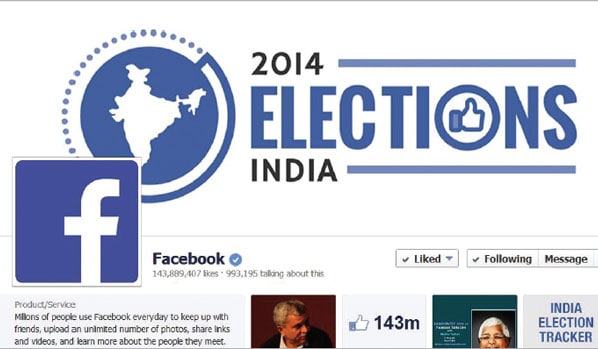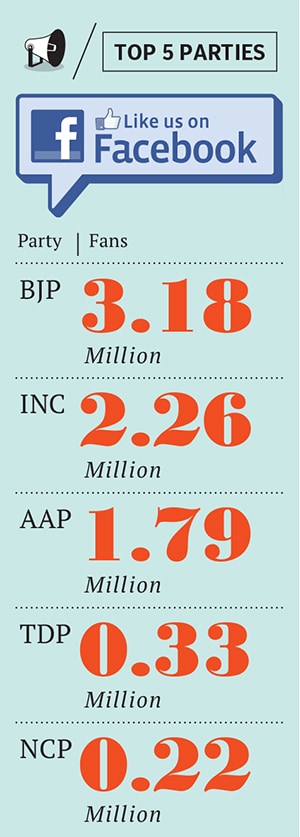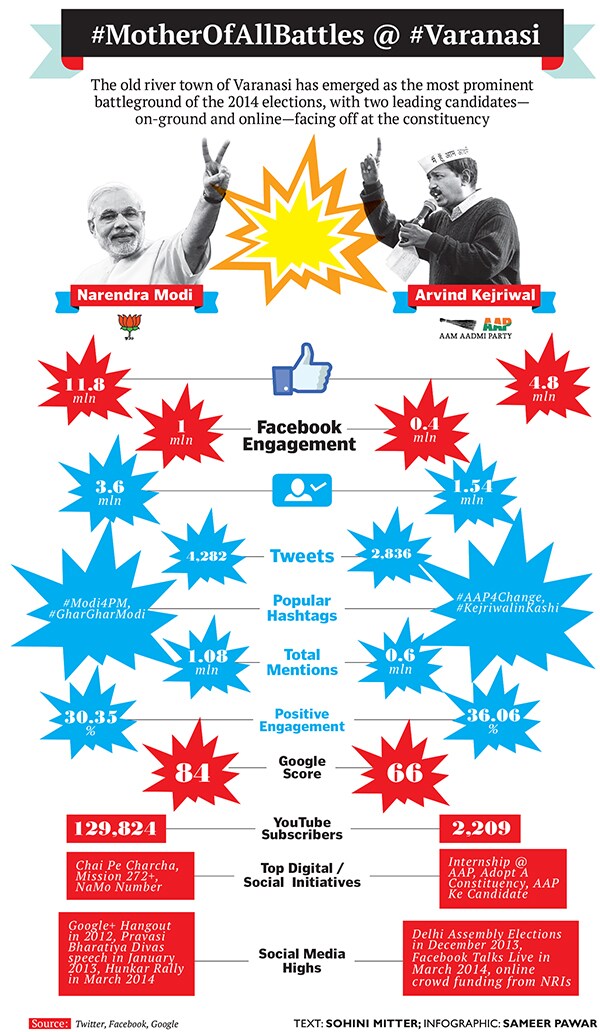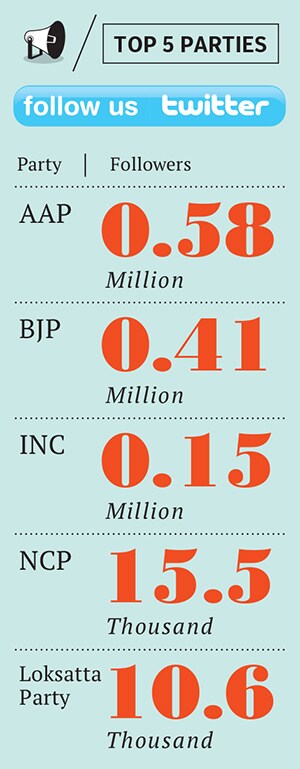Social Media: Limited, but 'Liked' in Indian Elections
Limited internet penetration means social media activity may not quite define the Indian elections. But the value of 'likes', tweets and 'shares' is far from lost on political leaders
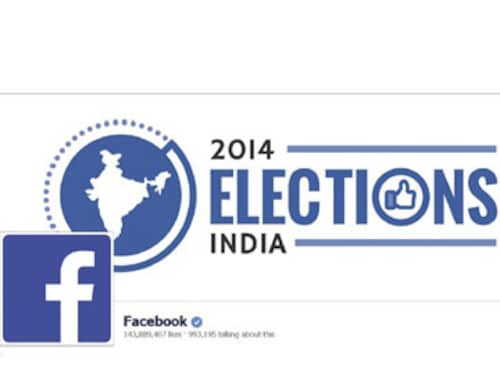

Barack Obama’s 2012 campaign made him what many call the “first social media president” (much like JFK was the first television president in 1961) it also made his digital campaign the gold standard for political parties in other democracies.
However, in the US, social media is ubiquitous, with more than 70 percent of the adult population engaging with it in some form. In India, on the other hand, internet penetration is just 205 million out of 1.2 billion, and registered voters (814 million) vastly outnumber social media users (103 million). So it may be premature to call these parliamentary elections India’s ‘first social media elections’. But a significant amount of the political discourse and campaigning has definitely shifted to the third and fourth screens.
A 2013 study by the Internet and Mobile Association of India (IAMAI) indicates that there are 160 “high impact” constituencies out of 543, where social media will not only influence voter turnout but also sway poll results by 3–4 percent. This impact is not limited to metros and Tier I cities, because a third of India’s social media traffic comes from towns with populations of less than 500,000.
“More importantly, the impact of social/digital media is not limited only to direct access. Conversations seeded online find their way into mainstream media, and get read, seen and discussed in towns and villages,” says Rajesh Lalwani, founder of Blogworks, a social media consulting firm.In national outfits like the BJP, the Congress, and new kid on the block, AAP, and state parties like the Shiv Sena, TMC and Telugu Desam, leaders and candidates have taken to online electioneering with much gusto. And the major social media platforms are not only acting as facilitators but also driving voter engagement in many ways.
Falling in ‘Like’ With Politics
Facebook is the mass social network in India, leading the pack by quite a margin. Ninety percent of its 93 million Indian users are of voting age, and 11 percent of the country’s voting population is using the platform.
Most of the activity happens on Facebook Pages: There are close to 52,000 pages for politicians and political parties in India, according to data provided by the company, and 60 of these are ‘verified’ pages.
Some have staggering numbers: Narendra Modi is one of the most influential global leaders on the platform with 11.8 million fans (second only to Barack Obama’s 39.5 million). At any given point, more than a million fans are bustling around his page, twice the number on Obama’s page. (The BJP, however, has a fan base of only 3.1 million.)
“Facebook pages are ‘mission control’ for politicians. They lend themselves well for political causes and public movements,” says Ankhi Das, public policy director, India & South Asia, Facebook. “The conversational power of the medium allows politicians to build real-time engagement with users. And they are engaging with authentic, real-name identities as opposed to fake or anonymous ones.”
Facebook recently launched its India Election Tracker , a dashboard that tracks mentions of candidates and parties in real-time. Users see a live-stream of candidates and can take a poll on issues (like health care, jobs, education, corruption, etc) that concern them most.
Das says, “After the announcement of polling dates, the word ‘elections’ saw a spike of 561 percent. The conversation around it seemed robust. ‘Lok Sabha’ was the second most mentioned, and saw a spike of 150 percent.”
Triggers are an essential part of social media engagement: An on-ground event almost always results in heightened online activity. Arvind Kejriwal had 850,000 Facebook fans in December last year following his victory in the Delhi assembly polls, this shot up to 4.8 million in March.
Kejriwal was also the first to appear on Facebook Talks Live, a multi-screen initiative by Facebook, news channel NDTV and website Newslaundry, where users directly post questions to key national and regional leaders on the Facebook India page, and have them answered on national television. “With Talks Live,” Das says, “we were replicating the very successful US model to create buzz.”
While enabling candidates and voters to interact with each other, Facebook is also testing the viability of platform integration and, not coincidentally, pitching itself against Google which hosted a massively successful Hangout with Modi in August 2012.
Last September Facebook kicked off its election initiatives by allowing users to add Register to Vote as a life event on their profiles. The company believed that by sharing individual stories of voter registration, users will create awareness and influence more people to register. “It [the initiative] also provides great data for politicians and parties to target advertisements,” notes NextBigWhat, a community of tech startups in India.
Search for Leaders
The search colossus made quite a splash with its Google+ Hangout with Modi in August 2012. It turned out to be the first real demonstration of the power and reach of social media for the Indian electorate. Modi was the first Indian public figure to use a Hangout to communicate with his audience across 116 countries.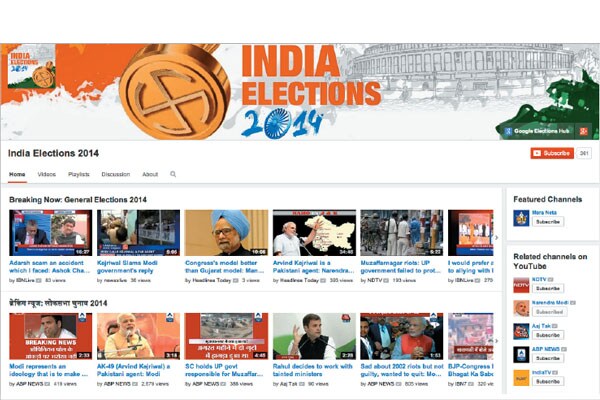
Data shared by Google reveals that the one-hour Hangout attracted over 4 million viewers, including online and television, as it was beamed on many channels, and over 20,000 questions were asked. About 166,000 clicks were generated on Modi’s website on the day of the Hangout and over 70,000 tweets poured in from all over the world while the Hangout was in progress.
“While all politicians have at some point or the other made use of Google products to reach out to a wider audience, Modi has been able to engage with the netizens and send across his message in a much better way compared to others,” says Rajan Anandan, MD & VP, sales and operations, Google India.
Modi leads in Google Search trends as well. “Modi has been the undisputed leader with high, yet consistent amount of searches on him. And he peaks search results almost every time he holds a rally or gets involved in campaign-related activities,” says Anandan.
In March, Google rolled out its new election hub for India called Politics & Elections which acts as a one-stop portal for poll-related content. It aggregates YouTube videos / Hangouts, Pledge to Vote messages and heat maps, search trends and election news in four tabs. It also gives users a detailed guide to registering as a voter.
Google has also tied up with Network 18 (publisher of Forbes India) to launch In Conversation , which is a series of Hangout sessions with leading politicians from national as well as state parties. This initiave seeks to blend the reach of digital with the impact of a town hall.
Parties have successfully raised funds on Google+, which has 30 million Indian users according to the company. Last year, AAP’s Kejriwal reached out to people in India and NRIs in the US, Canada and Hong Kong to crowd fund his campaigns. 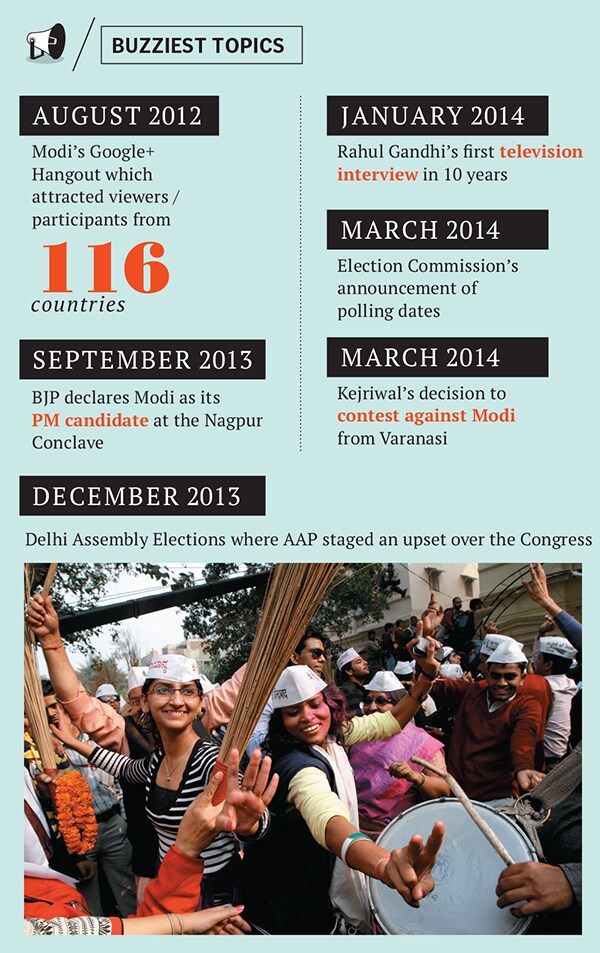 A little bird told us…
A little bird told us…
Twitter has turned into a virtual battleground in the run-up to the elections, with politicians clashing with each other by the minute. Though Twitter doesn’t disclose its user base in India, reports by IAMAI peg it at 33 million. And the conversation around politics and governance is “significant”.
Rishi Jaitly, Twitter’s India market director, says, “Tweets related to politics and politicians have risen 600 percent over the past 12 months. Some of the most frequently used hashtags are #loksabha, #polls2014, #elections2014.”
Twitter lends itself to real-time conversations. It is, as Jaitly says, “the world’s town square, which has a trickledown effect on the populace.” According to NextBigWhat, the governments of almost two-thirds of the 193 UN member countries have a presence on Twitter. And in India, all major parties and most politicians have fairly active accounts.
One of the most-used Twitter features is Promoted Tweets, where advertisers (political parties in this case) pay to have their tweets reach potential users as well as existing ones. Every major party uses this feature extensively.
Twitter is actively looking for multi-screen engagement, to make it the second screen to TV. The tech firm has tied up with news channel Headlines Today to launch #YourVote2014 , where voters can engage with politicians and thought leaders via tweets that are processed and analysed by data firms and projected as infographics on the television screen."Parties and news organisations are using a lot of third-party tools to understand and make sense of the huge volume of political conversation on Twitter, analyse key moments of the election, and tell a story innovatively with a mix of text, images and videos,” says Jaitly.
Some political units are using third-party apps to send SMS Tweets, to users without internet or social media access. Done well, these messages can reach up to 900 million mobile users in the country.
Twitter #TownHall is the firm’s latest initiative to exploit conversations and engagement around the elections. Twitter has associated itself with youth channel MTV India to launch a series of discussions with youth leaders like Priya Dutt and Shaina NC. Users can tweet questions to the @MTVIndia handle with hashtags #RockTheVote and #TownHall and get them answered on the channel.
Twitter is also sharing best practices with organisations, volunteer groups and parties on ways to deconstruct trending topics, hashtags and the voluminous chatter. Jaitly says, “One of the most unique things on Twitter is you have two high-profile politicians tweeting back-and-forth to each other and their entire conversation is up for free, public consumption. Twitter is just the shortest distance between you and your audience.”
SIGNIFICANT OTHERS
Instant messaging platform WhatsApp, which was recently acquired by Facebook, has grown to 45 million active users in India and is being used innovatively by parties like the Shiv Sena, Congress, and the AIADMK. A Congress volunteer who also heads the party’s WhatsApp outreach said, “WhatsApp contacted us and shared tips on how we could use the medium better.”
WhatsApp’s Business Head Neeraj Arora, however, denies approaching any political party. “We neither store nor know what our users talk about on WhatsApp.
It is built around the notion of private communication,” Arora told Forbes India in an email.
Nevertheless, the app’s easy interface, free availability on most phones, and group features that allows bulk political messages to be sent, has made it one of the hottest tools of communication in this election.
On April 3, Facebook India announced the second round of its Facebook Talks initiatives. Ankhi Das, Facebook’s Public Policy Director for India & South Asia, wrote in a post, “In Season II of Facebook Talks, we are taking the show to the people in some important constituencies. Madhu Trehan, Editor–in–Chief of Newslaundry, will take this travelling show to Amritsar, Varanasi and Vadodara and hold Citizen townhalls. Facebook groups will be created [for these cities] where our local Facebook community can post short video entries for selection for being on the Citizen panel for the townhalls. Through Facebook events the Facebook community in these constituencies can register to attend and watch and participate in this event on location.”
First Published: Apr 14, 2014, 06:26
Subscribe Now